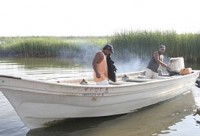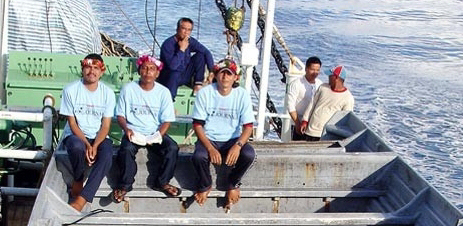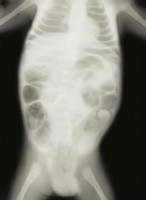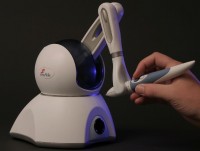
Three fisheremen survive nine months at sea.
Salvador Ordoñez Vázquez, Jesús Vidaña López and Lucio Rendón Becerra, are the fishermen who drifted 8,000 kilometres (4,971 miles) across the Pacific Ocean in an open boat for nine months are the toast of Mexico.
They survived rawing fish, seabirds and rain water.
From San Blas, Nayarit (Mexico), to Marshall Islands, Majuro (near Australia) they were found by the Kusskaooss, a ship from a fishing company.
Other related stories:
On 1942, a chinese sailor called Poon Lim survived 4 months on the Atlantic Ocean.
On 1789, the british William Bligh survived 6 weeks.
What a great story, I’m very happy about them.
U P D A T E: They are safe in land

On October 28th, 2005 five fishermen went to hunt sharks. On the very first night, they lost their fishing line. While they looked for this missing line, they exhausted all of their fuel.
During the next few days, to survive, they ate the birds that settled into their boat. They cracked them with a knife, removed their intestines, and used them for food. They walked from one side of the boat to the other trying to fish with hands. They collected gallons of rainwater that slipped into the boat.
One of its more terrible moments was when they shared the night with orcas. They thought that one of them would flip over the small boat. They guarded their fallen companions Juan and “El Farsero” during those three days. Later, they threw their bodies to the sea.
Salvador said: “The day that Juan died, the 20th of January, he called to me and I asked him: ‘What are you trying to tell me, Juanito?’ He looked straight into my eyes and then he died, I will never forget this picture”
They did not want to die, but they let eat, said Lucio, the one from Nayarit. “El Farsero” was the oldest one, but he never wanted to eat, said Jesus. The three assured that the deceaseds were from Mazatlán.
Jesus is the owner of the compass and he frequently let them know that they would eventually arrive in China.
Lucio owned a little Casio watch that prolonged the agony “I had to leave it because each little while they asked me what time was it”.
And Salvador, the master and guardian of the Bible, organized mornings, afternoons and nights of reading.
The mental picture of themselves: Three fishermen on a boat in the middle of the ocean, reading aloud Biblical passages to drive away the fear, the desperation. “He says to God, help yourself that I will help you”.
Nine months and nine tragic days, but on 9th of August, they celebrated when the Taiwanese boat Koo´s 102 found them in the middle of the ocean.
These three men had never had seen such a beautiful dawn in their lives. They were all barefoot, with the swelling in the feet. They were unwell with the marks of the shipwreck in the skin. They saluted. They said that they were well, that they were not scared. They were not cannibals and they didn’t eat their companions as rumored.
The crew of the rescue ship made them put on a T-shirt to take the above picture. These brave men will always remember this journey from the day left the Mexican coast and after more than nine months they appeared in Micronesia. Look out the picture
After 289 days of shipwreck, they said: “We never lost the hope”
Dr. Jon Mikel Iñarritu






